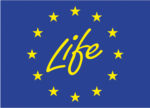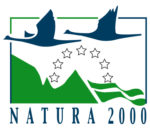European bison in Poland
Diversification and development of the European bison population in north-western Poland
The European bison (Bison bonasus) is one of two extant species of bison, alongside the American bison. It once ranged throughout the lowlands of Europe, with the last wild populations, in Poland’s Białowieża forest and the northern Caucasus, becoming extinct by 1927. They have since been reintroduced from captivity into several European countries, with all animals being descendants of the Białowieża or lowland European bison. Today, in the West Pomeranian region, the population of European bison is small, isolated and of low genetic diversity. Furthermore, growth in the population takes place without a corresponding increase in the area of occurrence, with low social acceptance being a key factor blocking the growth and expansion of the population.
The project is addressing the problems of low genetic diversity and population growth of European bison in and between Natura 2000 network sites in north-western Poland. The main objectives are to create a model for bison population management in an area of intensive human economic activity, and to increase the European bison population from the existing 110 to at least 190 individuals. The project is also initiating a corresponding increase in the area for bison habitat by at least 30%, with a decrease in the average seasonal bison density per area unit. The project’s specific objectives are to:
- Create a new herd of bison in between the existing ones and, as a result, to increase the genetic diversity of the population and facilitate genetic exchange between herds;
- Improve the European bison feeding basis in the expanded area;
- Create a bison support unit as a system tool for population management;
- Introduce measures to reduce bison damage to forests and crops;
- Improve the safety of animals through the dissemination of information on their current habitat areas; and
- Improve public awareness, so that friendly local community attitudes help the herds to develop, and to transfer positive patterns of attitude into new areas.
2. The increase of the area of the Western Pomerania bison by at least 30%.
3. The provision of 145,12 hectares of meadows, 48.49 hectares of food plots and 2 hectares of orchards for the European bison.
4. The creation of 22 new feeders for bison and the renovation of the 10 existing ones.
5. The creation of the Bison Support Unit – a unit provided with the staff and equipment necessary to handle the European bison population in Northwestern Poland during the project and after its completion.
6. The creation of two points storing food for bison, ensuring the storage of large amounts of food without loss and its efficient loading and distribution.

The European bison (Bison bonasus) is one of two extant species of bison, alongside the American bison. It once ranged throughout the lowlands of Europe, with the last wild populations, in Poland’s Białowieża forest and the northern Caucasus, becoming extinct by 1927. They have since been reintroduced from captivity into several European countries, with all animals being descendants of the Białowieża or lowland European bison. Today, in the West Pomeranian region, the population of European bison is small, isolated and of low genetic diversity. Furthermore, growth in the population takes place without a corresponding increase in the area of occurrence, with low social acceptance being a key factor blocking the growth and expansion of the population.
The project is addressing the problems of low genetic diversity and population growth of European bison in and between Natura 2000 network sites in north-western Poland. The main objectives are to create a model for bison population management in an area of intensive human economic activity, and to increase the European bison population from the existing 110 to at least 190 individuals. The project is also initiating a corresponding increase in the area for bison habitat by at least 30%, with a decrease in the average seasonal bison density per area unit. The project’s specific objectives are to:
- Create a new herd of bison in between the existing ones and, as a result, to increase the genetic diversity of the population and facilitate genetic exchange between herds;
- Improve the European bison feeding basis in the expanded area;
- Create a bison support unit as a system tool for population management;
- Introduce measures to reduce bison damage to forests and crops;
- Improve the safety of animals through the dissemination of information on their current habitat areas; and
- Improve public awareness, so that friendly local community attitudes help the herds to develop, and to transfer positive patterns of attitude into new areas.

2. The increase of the area of the Western Pomerania bison by at least 30%.
3. The provision of 145,12 hectares of meadows, 48.49 hectares of food plots and 2 hectares of orchards for the European bison.
4. The creation of 22 new feeders for bison and the renovation of the 10 existing ones.
5. The creation of the Bison Support Unit – a unit provided with the staff and equipment necessary to handle the European bison population in Northwestern Poland during the project and after its completion.
6. The creation of two points storing food for bison, ensuring the storage of large amounts of food without loss and its efficient loading and distribution.




